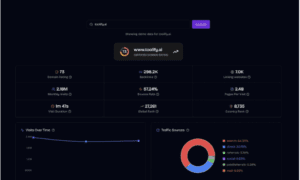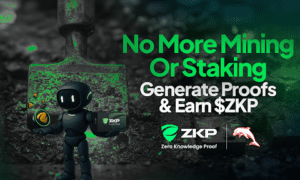Online shopping keeps changing fast and dropshipping stays in every conversation because it needs almost no cash to start. People in every country hear that all you need is a laptop and you are in business – they jump in. The question that never goes away is: how much do dropshippers make – or is the whole thing just another TikTok fairy tale?
Money comes in but it comes in waves. One store clears a few thousand dollars a month – another store run by someone just as smart sells the same product plus loses money. The difference is usually three things – the owner reads the numbers instead of guessing, the supplier ships the right item on time and the store looks like a real brand instead of a copy paste catalog.
Understanding the Dropshipping Model
This is the plain version. You open a web shop, but you never touch the goods. A buyer pays you first – you then pay a supplier and keep the difference. The supplier packs the box but also sends it straight to your customer. You never see the product and you never rent a warehouse.
Because you skip the stock step, the only cash you need at the start is for a domain name, a store theme and a few test ads. You spend your days writing product pages as well as answering emails while the supplier handles boxes and tape.
The downside is that the same low fence you climbed over lets thousands of others in. Once everyone sells the same LED ring light, the winner is whoever builds trust fastest – good photos, clear refund rules and replies that sound human.
Average Earnings – What the Numbers Say
Zendrop or similar platforms publish real dashboards. A beginner who opens a store in March often ends March with two hundred to six hundred dollars in profit. After the owner learns which ads pay back and which products return too many complaints, the same store often pulls $1,000 to $5,000 profit per month. Stores that turn into known brands, with repeat buyers and email lists, pass 100,000 per year, but that jump usually takes twelve to thirty six months of weekly tweaks and also dead-end tests.
Profit left after all bills – product cost shipping label and ad spend – lands between 10 % and 30 %. A 30 dog brush that costs 9 of ads leaves around $5 to $8 for the owner. Electronics next to fitness gear sit at the high end of the range – phone cases and keychains sit at the low end because five hundred other sellers race to the bottom price.
What Really Decides Whether You Win or Lose
Dropshipping has nothing to do with luck. It is a job of keeping many small wheels turning at the same time. The points below decide how much money stays in your pocket at the end of the month.
1. Picking a Niche
Choose a group of products that many people want but few stores sell. In 2025 strong examples are toys for pets, gear for home workouts, goods that do not harm the planet and add-ons for smart houses.
2. Learning How to Advertise
Profit is won or burned in the ad account. If you know how to run Meta Ads, Google Shopping besides TikTok clips, you move from zero to profit. The best stores often put half of every dollar they earn back into ads so new buyers keep arriving.
3. Working with Good Suppliers
The parcel must leave the warehouse fast, match the photo and arrive unbroken. One late or wrong shipment erases buyer trust. Top sellers sign up with fulfillment hubs that vet suppliers and track every box.
4. Keeping Buyers After the First Sale
The fairy tale says money only comes from new buyers. The truth is that repeat orders pay the bills. A simple email list, a points program and a product that lasts turn one sale into many. Second-time buyers cost no extra ad dollars – the margin grows.
Costs You Do Not See at First Glance and Errors Almost Everyone Makes
The idea looks easy until the bills show up. Ads that are not tuned burn cash faster than they bring it in. Card processors take a cut every time a customer pays. Monthly app fees pile up. Returned goods eat another slice of the margin.
A second trap is the “viral” gadget that dies after four weeks. A fad spike feels good, but the wave drops before you order the second batch. Lasting stores ride trends yet also stock items people need year after year.
Rules matter too. Sellers must obey buyer protection laws, privacy rules and sales-tax codes, above all in Europe or North America. A single fine wipes out weeks of profit.
The Software That Runs Today’s Stores
Winners no longer stare at spreadsheets and hope. They let code do the heavy jobs.
AI engines watch shoppers and point to the next hot product before it explodes. Robots in warehouses print the shipping label minutes after the buyer clicks “buy.” Live dashboards show ad cost, stock count and net profit for every SKU, updated each minute.
Those tools turned dropshipping into a faster, bigger business than it was at the start. Owners who let software handle the daily chores earn more because they spend their hours on plans, not on boxes and labels.
The Long-Term Outlook for Dropshipping
Experts expect the world dropshipping market to top $300 billion by 2027 plus shoppers still want ease and choice. Yet more rivals but also higher ad prices now push winners to stand out through brand, not through a new gadget alone.
The stores that lead tomorrow will act like real brands, not like faceless check out pages. They win trust by showing prices, ship times and factory sources without hiding anything – they answer emails fast as well as pick suppliers who treat workers and the planet with care.
As the sector grows up, more sellers will run a mix – they dropship a fresh item for thirty days to see if it sells – slap their own label on the winners or stock cartons in a local warehouse. That mix keeps risk low and margins high.
Final Thoughts
How much do dropshippers earn in 2025? The blunt truth – the number tracks the owner’s work, the data used also the quality of every step. Plenty bring home a small side paycheck – a focused few who learn one narrow field and pay for sharp ads pull in serious money.
Dropshipping still opens its doors to newcomers with a laptop next to a few dollars. Like every real business, it pays for clear plans, daily effort and the knack to change when numbers shift, not for lucky breaks.
Anyone who wants to launch or grow must study, test plus stick around for years, because the top sellers do not run after fads – they build sturdy machines that keep ringing sales long after the hype moves on.

































